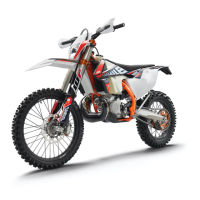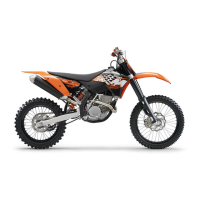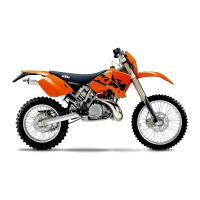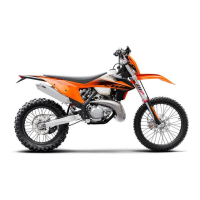16 BRAKE SYSTEM 111
201494-10
– Open shut-off valve
4
.
Info
Follow the operating instructions of the bleeding device.
– Ensure that the filling pressure is correctly set at pressure gauge
A
. If necessary,
adjust the filling pressure at pressure regulator
B
.
Guideline
Filling pressure 2… 2.5 bar (29… 36 psi)
201599-10
– Pull off protection cap
5
of the brake caliper bleeder screw. Connect the hose of
the bleeder bottle.
Bleeding device (00029013100) ( p. 272)
– Open bleeder screw
6
by approx. one half turn.
Info
Bleed until fresh brake fluid emerges from the bleeder bottle hose without
bubbles.
– Tighten the bleeder screw.
– Close shut-off valve
4
.
– Open the bleeder screw again until brake fluid stops emerging.
Info
This prevents overfilling of the brake fluid reservoir.
– Tighten the bleeder screw. Remove the hose of the bleeder bottle. Mount the pro-
tection cap.
– Disconnect the bleeding device. Remove the bleeder cover.
309386-10
– Add brake fluid to level
C
.
Guideline
Level
C
5 mm (0.2 in)
Brake fluid DOT 4 / DOT 5.1 ( p. 268)
– Position the cover with the membrane. Mount and tighten the screws.
Info
Clean up overflowed or spilt brake fluid immediately with water.
– Check the hand brake lever for a firm pressure point.
16.9 Checking the rear brake linings
Warning
Danger of accidents Reduced braking efficiency caused by worn brake linings.
– Change worn brake linings immediately.
101381-10
– Check the brake linings for minimum thickness
A
.
Minimum thickness
A
≥ 1 mm (≥ 0.04 in)
» If the minimum thickness is less than specified:
– Change the brake linings of the rear brake. ( p. 112)
– Check the brake linings for damage and cracking.
» If damage or cracking is visible:
– Change the brake linings of the rear brake. ( p. 112)
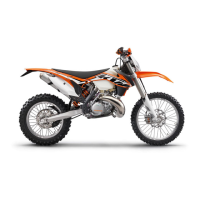
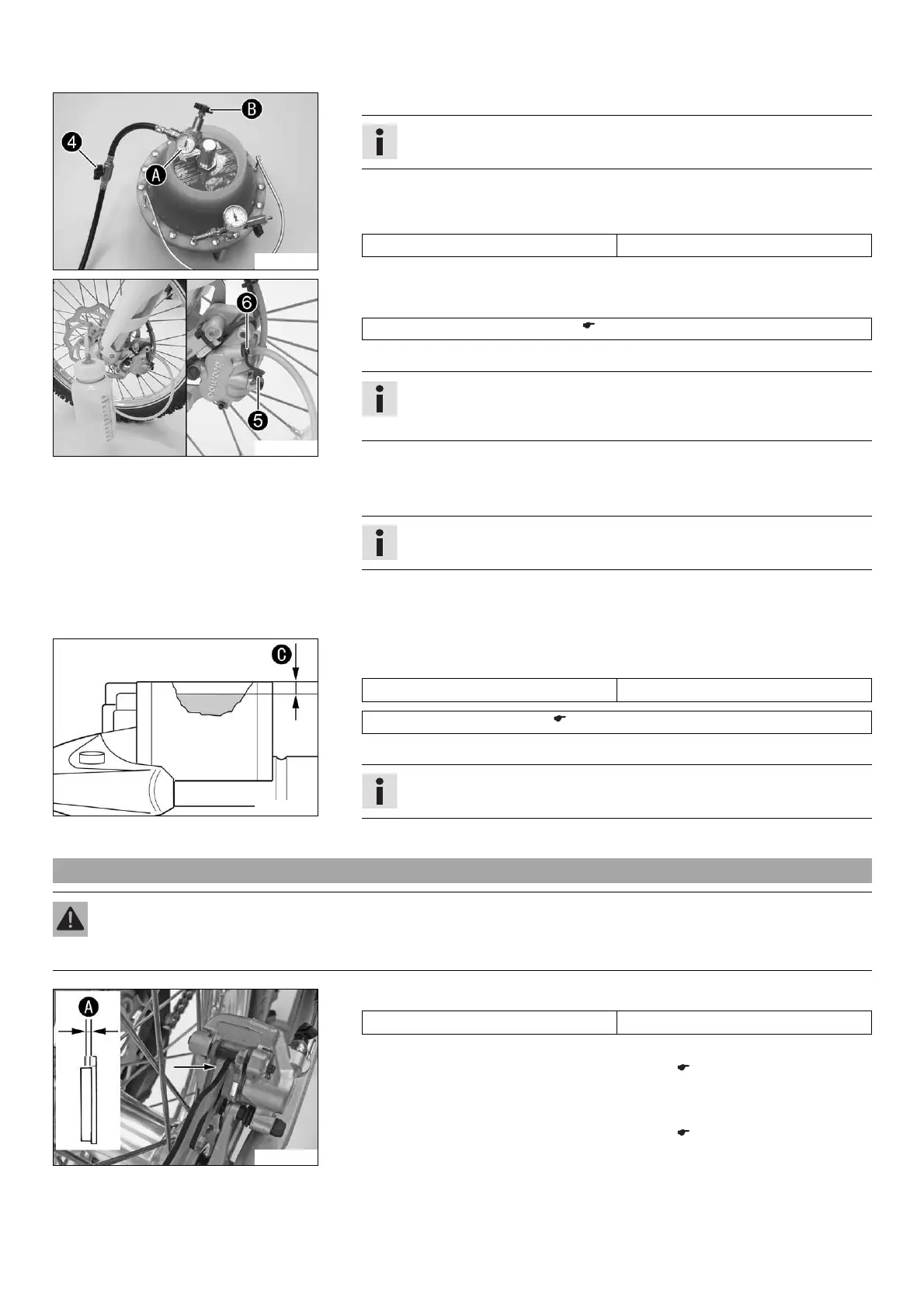